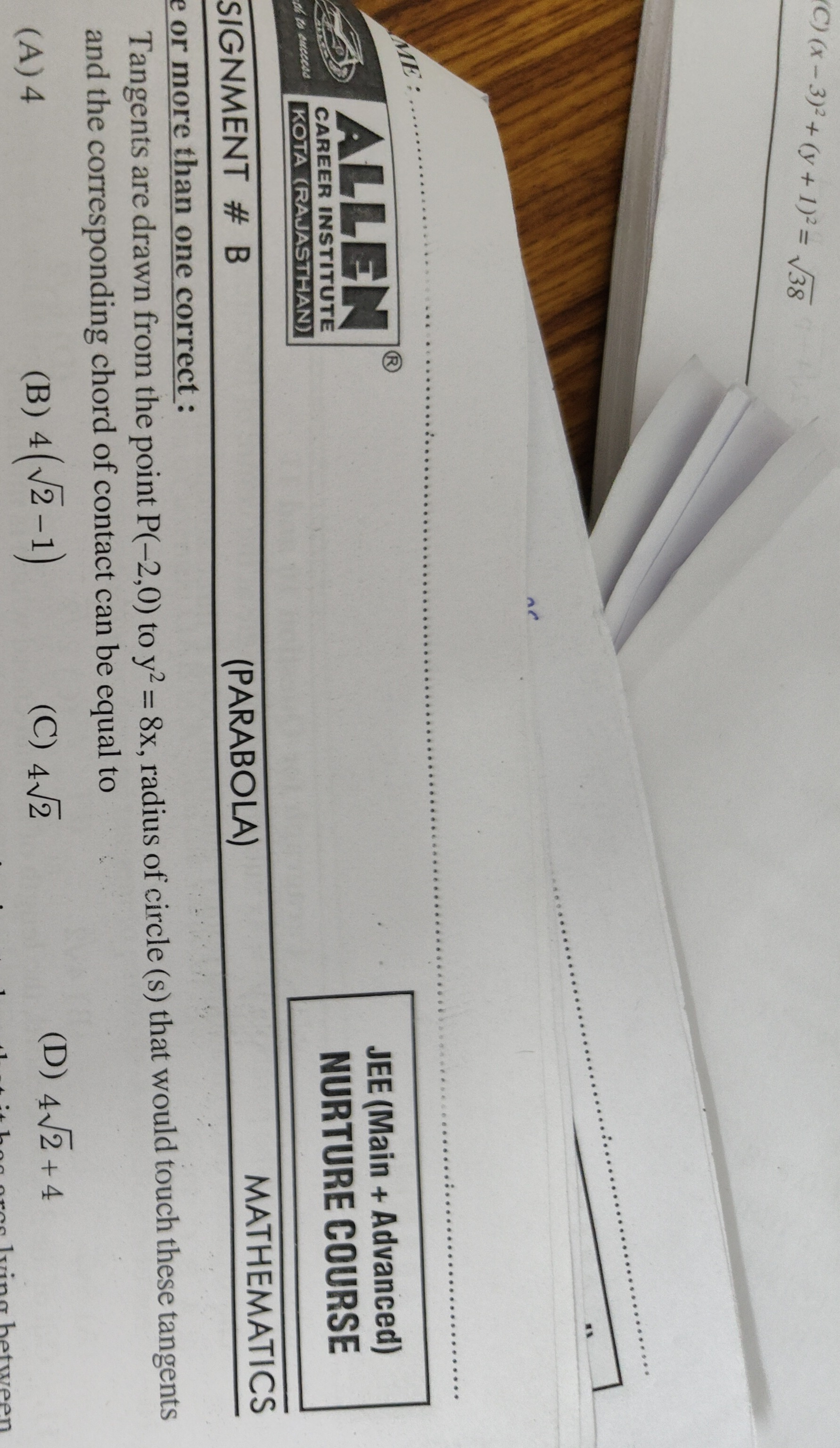Question
Question: Tangents are drawn from the point P(-2,0) to $y^2 = 8x$, radius of circle (s) that would touch these...
Tangents are drawn from the point P(-2,0) to y2=8x, radius of circle (s) that would touch these tangents and the corresponding chord of contact can be equal to

4
4(2−1)
42
42+4
The possible radii are 4, 4(2−1), and 4(2+1). Options (A), (B), and (D) are correct.
Solution
The parabola is y2=8x, so 4a=8⟹a=2. The point is P(-2,0). The chord of contact is y(0)=2(2)(x+(−2)), which simplifies to 0=4(x−2), so x=2.
The tangents from P(-2,0) to y2=8x have equations y=mx+m2. Substituting P(-2,0): 0=−2m+m2⟹2m=m2⟹m2=1⟹m=±1. The tangents are y=x+2 (or x−y+2=0) and y=−x−2 (or x+y+2=0).
Let the circle have center (h,k) and radius r. The circle touches x=2, x−y+2=0, and x+y+2=0. The distance from (h,k) to these lines must be r.
- r=∣h−2∣
- r=12+(−1)2∣h−k+2∣=2∣h−k+2∣
- r=12+12∣h+k+2∣=2∣h+k+2∣
From (2) and (3): 2∣h−k+2∣=2∣h+k+2∣⟹∣h−k+2∣=∣h+k+2∣. This implies h−k+2=h+k+2 (so k=0) or h−k+2=−(h+k+2) (so 2h=−4⟹h=−2).
Case 1: k=0. The center is (h,0). r=∣h−2∣ and r=2∣h+2∣. ∣h−2∣=2∣h+2∣⟹(h−2)2=2(h+2)2 2(h2−4h+4)=h2+4h+4 2h2−8h+8=h2+4h+4 h2−12h+4=0 h=212±144−16=212±128=212±82=6±42.
If h=6+42, r=∣(6+42)−2∣=∣4+42∣=4+42=4(2+1). If h=6−42, r=∣(6−42)−2∣=∣4−42∣=−(4−42)=42−4=4(2−1).
Case 2: h=−2. The center is (−2,k). r=∣−2−2∣=∣−4∣=4. Also, r=2∣−2−k+2∣=2∣−k∣=2∣k∣. So, 4=2∣k∣⟹∣k∣=42. The radius is r=4.
The possible radii are 4(2+1), 4(2−1), and 4.
